Types of Surf Boards: Choosing the Right Board for Your Skill Level
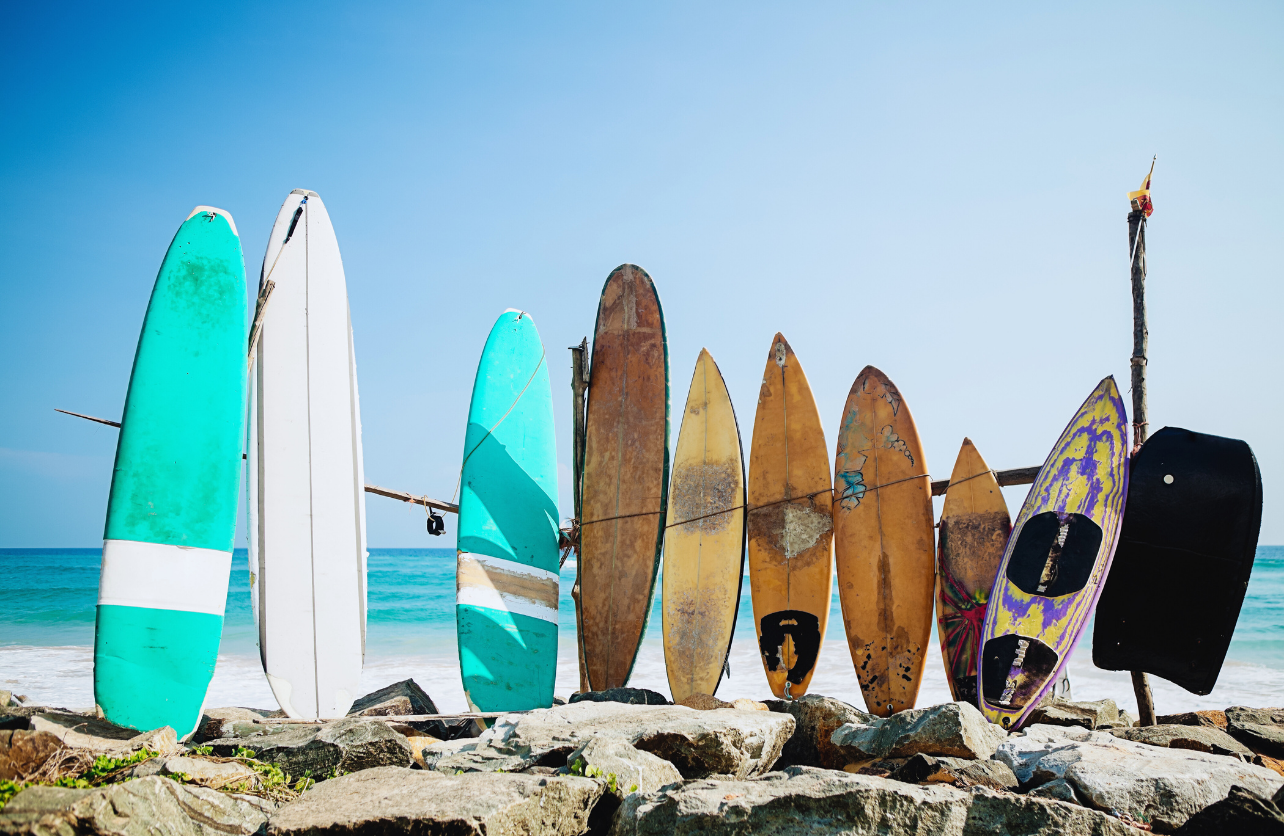
Surfing is not just a sport; it’s a lifestyle that connects you with the ocean’s rhythm and power. Central to your surfing experience is the surfboard you choose, as it significantly impacts your performance, comfort, and overall enjoyment in the water. With a myriad of surfboard types available, selecting the right one based on your skill level and surfing goals can be daunting. This guide explores the different types of surfboards—shortboards, longboards, fish, funboards, and guns—and provides insights to help you make an informed decision.
Understanding the Basics
Before diving into specific surfboard types, it’s essential to understand the fundamental differences that distinguish each board. Surfboards vary in shape, size, volume, and design, each tailored to different wave conditions and surfer abilities. Here’s a breakdown of the most common types:
1. Shortboards
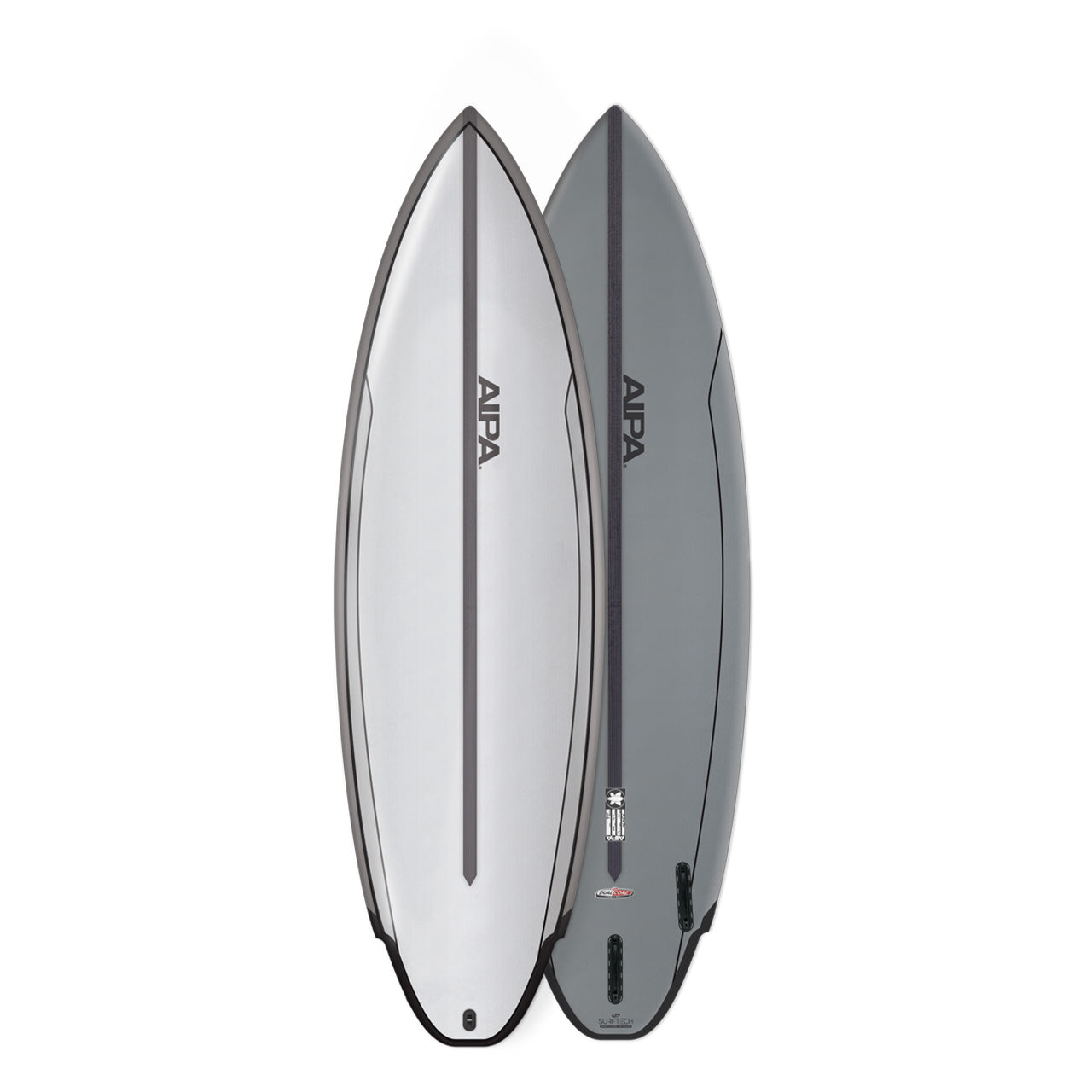
Overview
Shortboards are the quintessential surfboards for performance-oriented surfers. Typically ranging from 5’6″ to 6’2″, they are designed for agility, speed, and maneuverability in powerful and steep waves.
Key Features
- Narrower Shape: Enhanced responsiveness and ability to make quick turns.
- Taller and Thinner: Provides greater lift and speed in the wave face.
- Pointed Nose and Tail: Facilitates sharp maneuvers and better wave riding.
- Fewer Fins: Often equipped with thrusters (three fins) for stability and control.
Best For
- Intermediate to Advanced Surfers: Those with solid paddling skills and the ability to handle fast, powerful waves.
- Performance Surfing: Ideal for executing high-performance maneuvers like cutbacks, snaps, and aerials.
- Steep and Powerful Waves: Excels in hollow barrels and steep wave faces.
Pros and Cons
Pros:
- High maneuverability and responsiveness.
- Enhanced performance in powerful waves.
- Lightweight and easy to handle for skilled surfers.
Cons:
- Less stable for beginners.
- Requires more skill to ride effectively.
- Not ideal for smaller, mushier waves.
2. Longboards
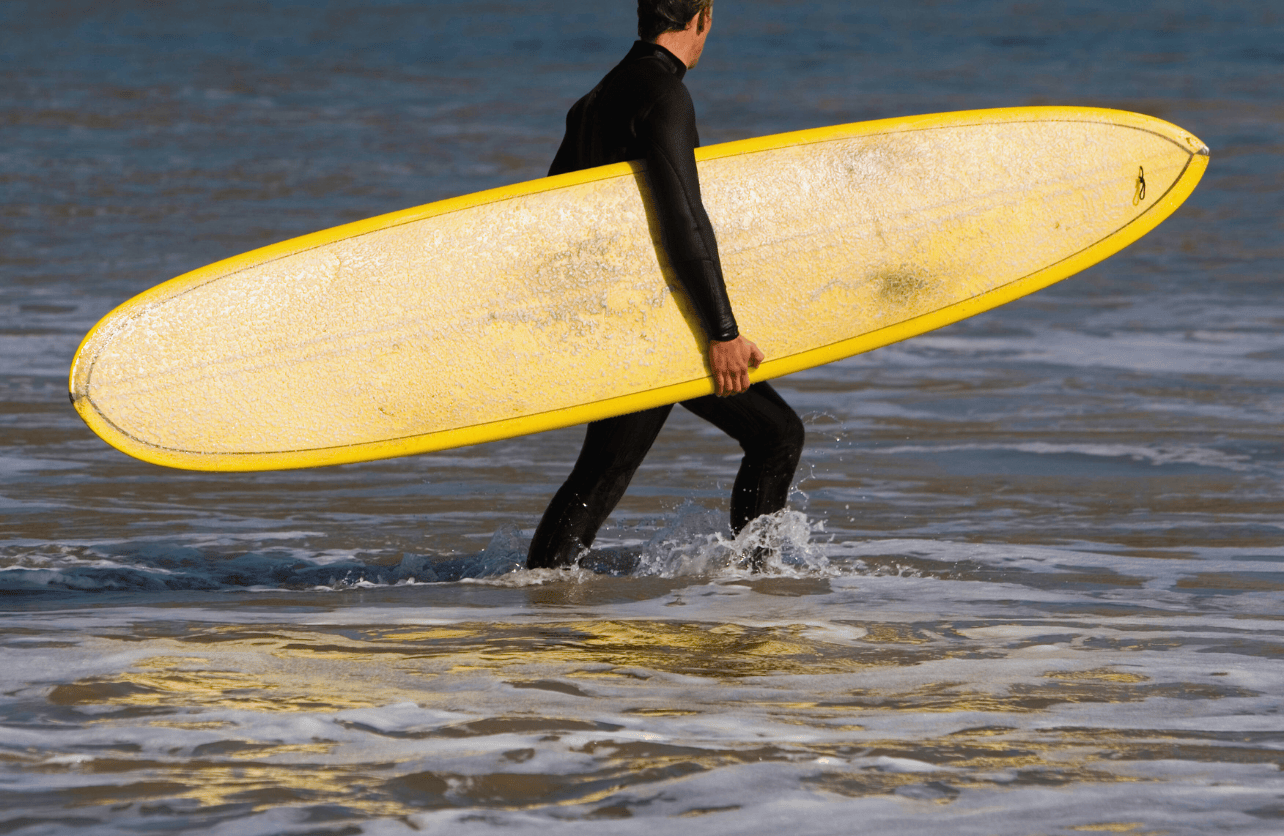
Overview
Longboards are the classic surfboards, typically measuring 9 feet or longer. They offer stability, ease of paddling, and a smooth ride, making them perfect for a relaxed surfing experience.
Key Features
- Wide and Thick Shape: Provides buoyancy and stability.
- Flat Bottom: Ensures a smooth glide across the wave.
- Round Nose and Tail: Enhances maneuverability while maintaining stability.
- Multiple Fins: Often equipped with single or two fins for balance.
Best For
- Beginners: The stability and ease of paddling make longboards ideal for those new to surfing.
- Casual Surfers: Perfect for a laid-back surfing style and enjoying longer rides.
- Small to Medium Waves: Excels in mellow, rolling waves where a smooth, graceful ride is desired.
Pros and Cons
Pros:
- Highly stable and easy to balance.
- Easier to paddle, reducing fatigue.
- Versatile for various wave conditions.
- Encourages a smooth, relaxed surfing style.
Cons:
- Less maneuverable in powerful or steep waves.
- Heavier and less portable due to size.
- Slower to respond for high-performance maneuvers.
3. Fish
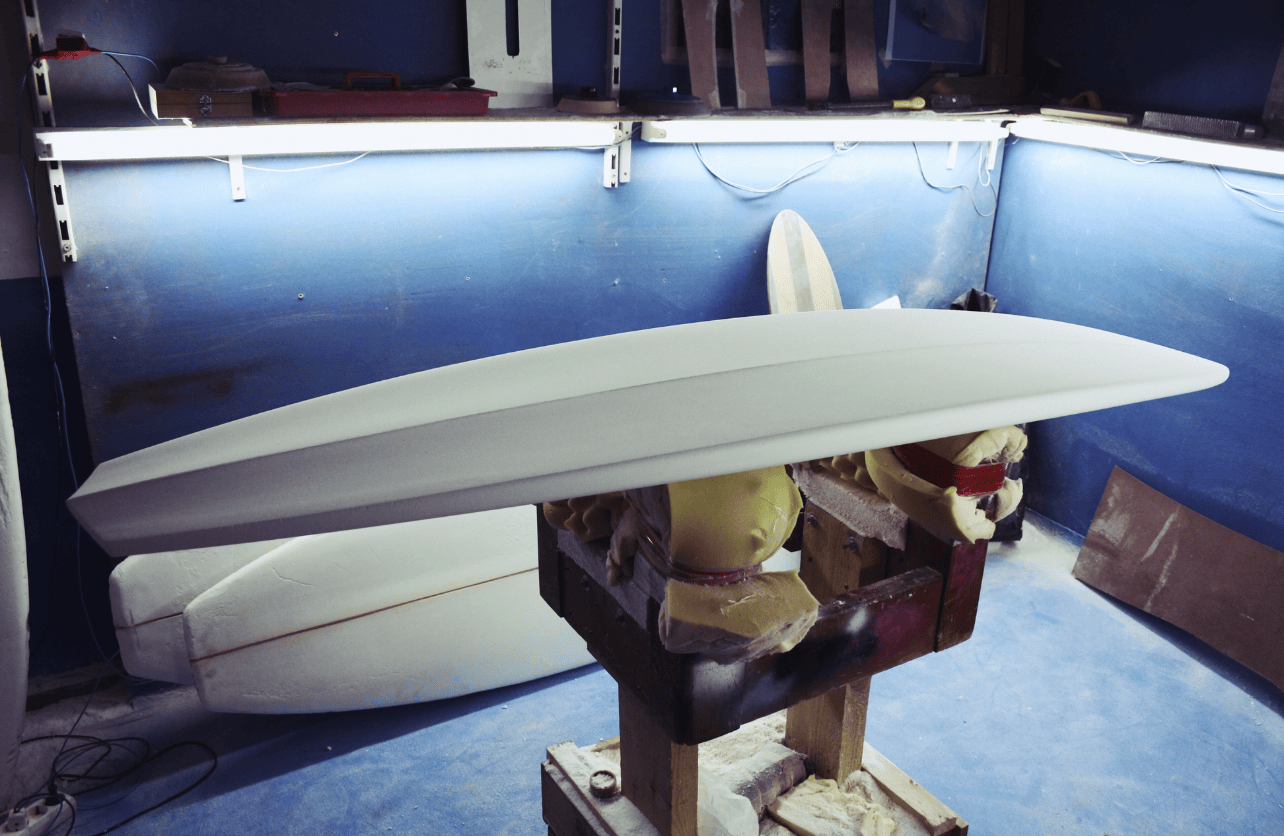
Overview
Fish surfboards are shorter and wider than shortboards, typically ranging from 5’0″ to 6’0″. They are designed for speed and performance in smaller, less powerful waves.
Key Features
- Wide and Short Shape: Enhances buoyancy and speed.
- Swallow Tail: Increases maneuverability and adds a playful feel.
- Minimal Rocker: Facilitates quicker bottom turns and easier wave catching.
- Multiple Fins: Often feature quad fin setups for enhanced speed and control.
Best For
- Intermediate Surfers: Those looking to add speed and style to their repertoire without the intensity of a shortboard.
- Smaller Waves: Perfect for beach breaks and smaller surf conditions where speed and ease of maneuver are beneficial.
- Freestyle Surfing: Great for performing stylish, fluid maneuvers and quick turns.
Pros and Cons
Pros:
- Faster and more responsive in smaller waves.
- Easier to paddle and catch waves quickly.
- Versatile for various wave conditions and styles.
Cons:
- Less stable in larger, more powerful waves.
- Not ideal for high-performance maneuvers in big surf.
- Can be tricky for complete beginners due to their shape.
4. Funboards
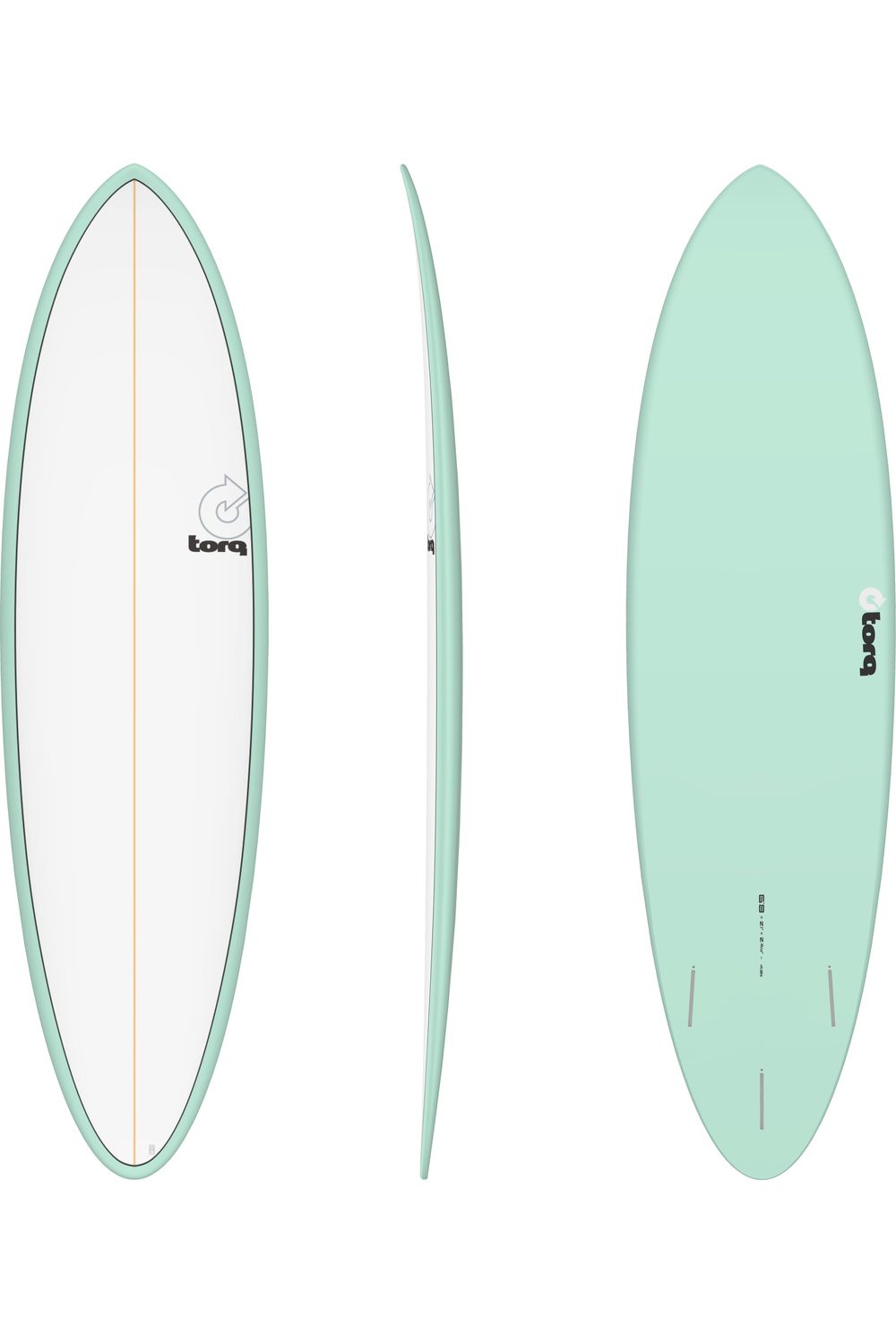
Overview
Funboards bridge the gap between shortboards and longboards, typically measuring between 6’0″ and 8’0″. They offer a balance of stability, maneuverability, and ease of use, making them a versatile choice for a wide range of surfers.
Key Features
- Mid-Length Shape: Combines elements of both shortboards and longboards for a balanced performance.
- Moderate Volume: Provides enough buoyancy for stability while maintaining responsiveness.
- Varied Fin Configurations: Can be equipped with thrusters or quads depending on desired performance.
- Moderate Rocker: Allows for both smooth rides and decent maneuverability.
Best For
- Transitioning Surfers: Ideal for those moving from beginner to intermediate levels, seeking more performance without sacrificing stability.
- Versatile Conditions: Suitable for a wide range of wave sizes and types, from small beach breaks to medium-sized reef waves.
- Casual to Moderate Performance: Perfect for surfers who enjoy both relaxed rides and occasional performance maneuvers.
Pros and Cons
Pros:
- Versatile and adaptable to various surfing styles and conditions.
- More stable than shortboards, yet more maneuverable than longboards.
- Suitable for a broad range of skill levels.
Cons:
- May not excel in extreme conditions compared to specialized boards.
- Can be bulkier than shortboards, affecting portability.
- Might lack the high-performance features of dedicated shortboards.
5. Gun
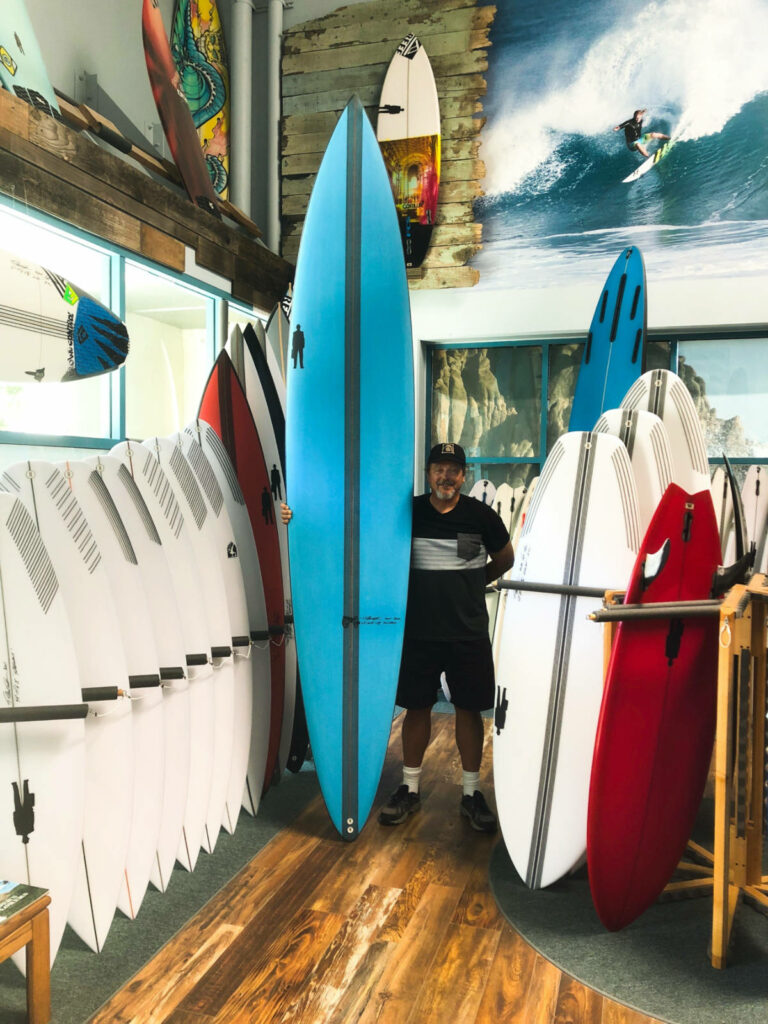
Overview
Gun surfboards are long, narrow boards, typically ranging from 7’0″ to 9’6″. They are specifically designed for big wave surfing, offering the necessary speed, control, and stability to handle massive, powerful waves.
Key Features
- Extra Length and Narrow Width: Enhances speed and stability in large, fast-moving waves.
- Pointed Nose and Tail: Reduces drag and facilitates quick, controlled maneuvers in powerful surf.
- High Volume: Provides the necessary buoyancy to support the weight of the surfer and maintain speed in big waves.
- Sturdy Construction: Built to withstand the intense forces and impacts of big wave surfing.
Best For
- Advanced to Expert Surfers: Only recommended for those with significant experience and skill in handling big waves.
- Big Wave Conditions: Specifically designed for high-energy, large surf environments like those found in places like Nazaré, Hawaii, and Mavericks.
- Performance and Control: Ideal for surfers seeking maximum control and performance in extreme wave conditions.
Pros and Cons
Pros:
- Exceptional speed and stability in big waves.
- Designed to handle the intense power of large surf.
- Offers precise control for navigating massive waves.
Cons:
- Extremely challenging to ride; not suitable for beginners or intermediate surfers.
- Heavy and less portable due to size and construction.
- Expensive compared to other surfboard types due to specialized design and materials.
How to Choose the Right Surf Board for Your Skill Level
Selecting the appropriate surfboard involves assessing your current skill level, the types of waves you typically encounter, and your surfing goals. Here’s a step-by-step guide to help you make the right choice:
1Assess Your Skill Level
- Beginner: Opt for longer, wider boards like longboards or funboards that offer greater stability and ease of paddling.
- Intermediate: As you gain confidence and skill, consider transitioning to funboards or fish boards to introduce more maneuverability without sacrificing stability.
- Advanced: If you’re comfortable with high-performance maneuvers and seeking greater responsiveness, shortboards or even guns (for big wave surfers) may be appropriate.
Consider the Wave Conditions
- Small to Medium Waves: Boards like fish and funboards perform well, offering speed and ease of maneuvering.
- Large and Powerful Waves: Shortboards and guns are designed to handle the intensity and speed required for big wave surfing.
- Varied Conditions: If you surf in diverse environments, a versatile board like a funboard may be the best choice.
Define Your Surfing Goals
- Casual Riding: Longboards provide a relaxed surfing experience, perfect for cruising and enjoying longer rides.
- Performance and Tricks: Shortboards and fish boards are ideal for executing high-performance maneuvers and tricks.
- Big Wave Surfing: Guns are specialized for tackling massive waves with control and stability.
Evaluate Board Features and Specifications
- Length and Volume: Ensure the board’s size matches your weight and skill level to maintain buoyancy and control.
- Shape and Design: Consider the rocker, nose, and tail shapes based on your desired performance and wave conditions.
- Material and Construction: Choose durable materials that suit your surfing frequency and environmental considerations, such as eco-friendly options.
Try Before You Buy
Whenever possible, rent or borrow different types of surfboards to experience their handling and performance firsthand. This practical experience can significantly inform your decision and ensure you select a board that feels comfortable and suits your style.
Summing Up
Choosing the right surfboard is a pivotal step in enhancing your surfing journey. Whether you’re a beginner seeking stability with a longboard, an intermediate surfer looking to add speed with a funboard or fish, or an advanced surfer tackling big waves with a gun, understanding the different types of surfboards and their respective uses is essential. By assessing your skill level, understanding the wave conditions you frequent, and defining your surfing goals, you can select a surfboard that not only matches your current abilities but also supports your growth as a surfer.
Investing time in choosing the right board ensures a more enjoyable, safe, and fulfilling surfing experience. Embrace the diversity of surfboard options, experiment with different types, and find the perfect board that complements your unique style and aspirations in the dynamic world of surfing.
FAQs
1. Can I use a longboard if I’m an advanced surfer?
Yes, advanced surfers can benefit from using longboards for certain styles like nose riding or for surfing in smaller, mellower waves. However, for high-performance maneuvers in powerful waves, transitioning to a shortboard might be more suitable.
2. How often should I replace my surfboard?
A surfboard’s lifespan depends on usage and care. Regular maintenance, such as repairing dings and proper storage, can extend a board’s life. Typically, surfers replace their boards every few years, but high-performance boards might need more frequent updates.
3. Are eco-friendly surfboards as durable as traditional ones?
Yes, many eco-friendly surfboards are designed to match the durability and performance of traditional boards. Innovations in sustainable materials have led to options that are both environmentally responsible and highly functional.
4. What’s the difference between a thruster and a quad fin setup?
A thruster setup uses three fins, providing a balance of stability, control, and maneuverability, making it versatile for various wave conditions. Quad fin setups have four fins, offering increased speed and drive, especially in smaller, mushier waves.
5. Do I need a special board for surfing in saltwater vs. freshwater?
While the fundamental design of the board remains the same, boards used in saltwater should be rinsed thoroughly after each use to prevent salt buildup and corrosion of fins and hardware. Additionally, freshwater waves are often smaller, so a board that performs well in smaller surf, like a fish or funboard, might be more suitable.
Your Adventure, Our Experience
At TheCampingList, our dedication to authenticity and reliability stems from our own adventures in the great outdoors. Our team, comprised of seasoned experts in hiking, camping, climbing, cycling, fishing, and hunting, rigorously tests every product and shares insights drawn from real experiences. This hands-on approach ensures our reviews and guides meet the highest standards of durability, functionality, and comfort. Moreover, our platform thrives on the rich contributions and feedback from our vibrant community of enthusiasts. We pride ourselves on delivering unbiased, educational content that empowers and informs your outdoor pursuits. Trust in TheCampingList for genuine advice and support, where we're all about enriching your journey, every step of the way.